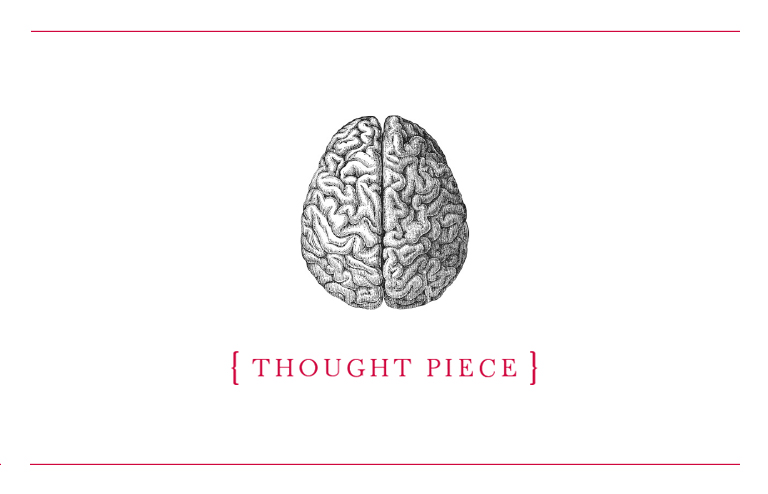Think back to the last person you met who made a real impression on you. What were the circumstances? What was it they did or said that was so memorable, and how did the whole experience make you feel?
We’re certain that the experience would have been either highly positive or negative, as we don’t tend to remember mediocrity. It would either have appealed to your sense of self and the values you hold, or jarred with them. It would have been pleasurable or uncomfortable. It might even be a happy anecdote that you share with friends and family, or a cautionary tale. One thing’s for certain, the experience would have helped you determine whether or not you wished to engage with that person further, or not at all.
Now imagine that person as a brand. This is what a Brand Experience is. All interactions – big and small – that a person has with a brand, when combined, forms their opinion of it. The experiences are a large part of what humanises the brand, so it’s no wonder that in recent years more and more focus is being applied to making these experiences not only positive, but memorable too.
We predict that this year we will see brands pay real attention to how they engage with customers, citing ‘brand immersion and experience’ over ‘brand reach’ as the way to prosper in 2016 and beyond.
So what is a great Brand Experience?
Experience, by its very nature, is highly personal, and so trying to control the factors which lead to it is not necessarily an easy, or achievable task.
Where you can trip up is if your intention isn’t genuine. So this isn’t about stunts to fill column inches or blog posts, if this happens it’s a happy bi-product. The motivation behind this activity needs to come from an authentic starting point to hold gravitas, and increase your chances of success.
![]() Take, for instance, this story about fashion brand Zulily…
Take, for instance, this story about fashion brand Zulily…
Earlier this year the story emerged from a customer, Kelly Blue Kinkel, who shared her experience on Facebook, saying that it had been ‘one of the best customer experiences of her life’. The story went like this: Upon receiving a coat from Zulily she had decided to return it. When she called their customer services team to enquire about how to go about this, she was informed that she would be refunded in full, but to keep hold of the coat and to donate it to a charity or someone in need.
Not surprisingly, this unexpected response got quite a bit of traction on social networks. It’s not clear how this came about as Zulily haven’t commented on it, but the fact is that this heart warming experience has endeared the brand to many.
Such an act is unlikely to be a rigid policy, as it doesn’t take Richard Branson to tell us that a business wouldn’t survive by ‘giving away’ every returned item. Perhaps they had a short run initiative for that week to help people in need, or maybe they allow their customer service employees to a certain number of ‘acts of kindness’ and this was the result of one of them? It could be that the employee just went rogue and has now been sacked? We don’t know – but what is clear, the power of the act far outweighs many marketing attempts to humanise that brand.
This empowerment of people to make business decisions which directly affects the experience a customer has of your business, is something which we came across when working with AO.com on their re-brand.
They had story after story of customer satisfaction. Reciting tales such as how AO.com paid for a dad, who was busy ‘wetting the baby’s head’, to get a taxi home from the pub to take delivery of a washing machine. Or how a family of four got a pizza delivery courtesy of AO.com, so they wouldn’t go hungry when their new cooker’s delivery driver was held up in teatime traffic.
The cost vs the reward is invaluable in cases such as this. Not only that, but these are the stories that customers share with their friends and family, and the value that these recommendations hold to any business is pure gold!
It doesn’t however, as these examples suggest, have to be sporadic acts which capture people’s hearts and minds. You can implement policies within your business to provide memorable moments for your brand and customer to share.
Larry Olmsted, a journalist for Forbes, was staying at the Hotel Hassler in Rome with his wife. As they were leaving, the doorman stopped them and one of the concierges approached to inform them that he thought they might have left some jewellery in their room. Sure enough, his wife realised that she had left all her jewellery, including her wedding and engagement rings, in the room. He writes about the relief they both felt, and the worry they were saved by the hotel returning this to them before they left.
The hotel, recognising the inconvenience customers, and to some degree the hotel itself, experience when an item is left behind, has a policy to minimise this. The owner of Hassler explains that hotel staff try to check rooms as soon as a guest checks out, so anything which might have been left behind can be returned to the owner before they even leave the building.
Another hotel we know of here in Yorkshire, actually calls its guests half an hour before they are due to arrive to ask if they are on schedule, and if they would like a bath running for when they get there!
These things don’t cost anything, but just a little extra effort, time and thought. Every business needs to look closely at their own customers’ journey to identify where they can truly enhance their experience with them.
Creating the experience, what to consider…
When looking to do this, you need to examine the touch points your brand has with your customer from their very first interaction – how it looks, what it says, how it makes them feel. But you should also consider these three less obvious factors too:
![]() The power of the emotive
The power of the emotive
![]() Recognising loyalty
Recognising loyalty
![]() Ensuring the parting is sweet
Ensuring the parting is sweet
The first point, emotion… this is the single most powerful driver when it comes to building brands today. The book ‘Brand Immortality: How brands can live long and prosper’, analysed 1400 case studies of successful advertising and found that adverts with purely emotional content almost doubled the performance of only rational content with a staggering 31% vs 16% boost in profitability.

In our Brandschool® workshops we illustrate this point by playing the John Lewis ‘Always a Woman’ advert, which has received, quite rightly, iconic status and has been linked to the retail giant reaffirming itself within the nation’s heart as a great British brand. We call the advert ‘a masterclass in emotional manipulation in 91 seconds’! It’s hard not to admire it. Go and watch it again and you’ll see where we’re coming from.
It’s emotion that is key to driving loyal behaviour and leads us onto the second point.
We’re all familiar with the phrase ‘brand loyalty’ – it’s what businesses mostly aspire to, and its brand experiences, which are best placed to reward and recognise loyalty. The issue, however, is, ‘are we really rewarding loyal behaviour’?
![]() Take, for example, these two scenarios.
Take, for example, these two scenarios.
A Landlady buys a new brand of bar snack which she comes across in her local cash and carry. The snack proves a hit with her customers and so she buys more.
A regular sees the new snack behind the bar and decides to try a bag. He loves them so much he raves about them on Facebook and Twitter.
Which of these two should be regarded as a brand advocate and in turn who is most likely to be brand loyal?
Of course it’s the proprietor’s customer, because he buys from an emotional place. He loves the product and connects with the brand. But in actual fact, traditionally, and all too often, brands don’t reward or even recognise these types of advocates. Brand loyalty equates purely to repeat purchase and so in this scenario the landlady would be rewarded.
This example was based on a real story. Luke Capasso, comedian, writer and avid vlogger tried a bag of Hogbites in his local pub, and something about the brand inspired him to create his own ‘unsanctioned Hogbites commercial’. It was liked and shared by his followers, finally being picked up by the brand’s producers.
Recognising Luke’s role as a powerful brand advocate, they sent him a pallet of Hogbites snacks. He then shared a photo of himself sat on this pallet through his social channels. Luke and his ‘unsanctioned adverts’, of which there are now two, also feature on the Hogbites website and he has been named an ultimate fan.
The chances that we all have a product which sparks the interest of someone willing to go as far as Luke did for the brand, are slim, but it highlights perfectly how simply using the repeat purchase metric to find our brand loyal customers, is not only flawed, but a short sighted strategy.
Once we’ve considered emotion and identified loyalty, we might want to examine where we focus our attention.
Obviously, we would argue that at every touch point a customer has with your brand, the experience should be carefully considered. But it’s understandable that there will be certain points which warrant greater focus, and brands will look to prioritise these initially.
To do this, you might start by looking at the customer journey from start to finish. There is a theory gaining momentum which you may wish to consider. The ‘Experiencing Self vs the Remembering Self’ which Daniel Kahneman, Nobel laureate discussed during his Ted Talk ‘The Riddle of Experience vs Memory’.
The theory explores the difference of how we experience a situation and how we remember it, and suggests that our memories put greater emphasis on how something ends, rather than the overall experience. It’s an intriguing theory, too vast in its own right to be discussed at any great length here, but what it does suggest is that when we look at creating positive experiences, it’s critical we pay particular attention to how the customer experiences the end of their journey with us, as this will directly influence whether it is a ‘final goodbye’ or merely a ‘see you again soon’.
So how do you start to factor this into your own brand… your Business?
Simple. Ask yourself who knows your customer best. Brand experiences are more often than not delivered by those who deal directly with your customers every day. As such, the best people to answer this question are your customer facing employees. Why not get them together and ask them all to read the examples in this article, then ask for their thoughts and ideas.
Who knows – you might be the next viral story we’re all talking about!
Got your own Brand Experience story to share tell us about it hello@10associates.co.uk
Nikki Phillipson, Account Director.
